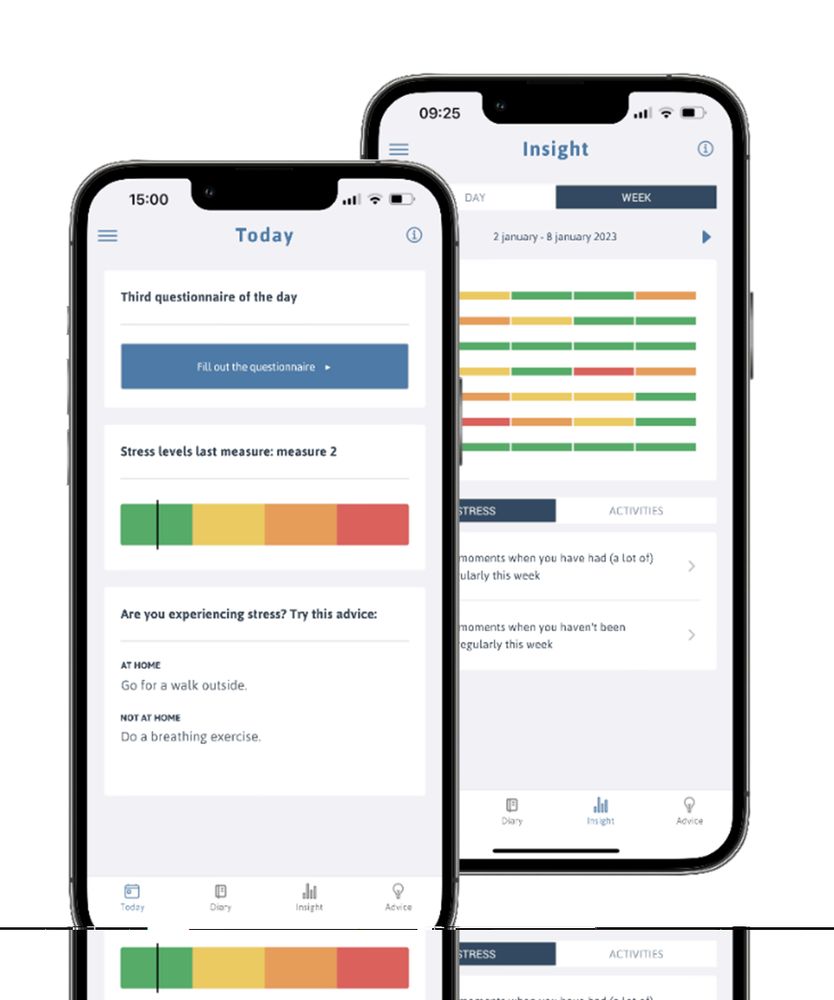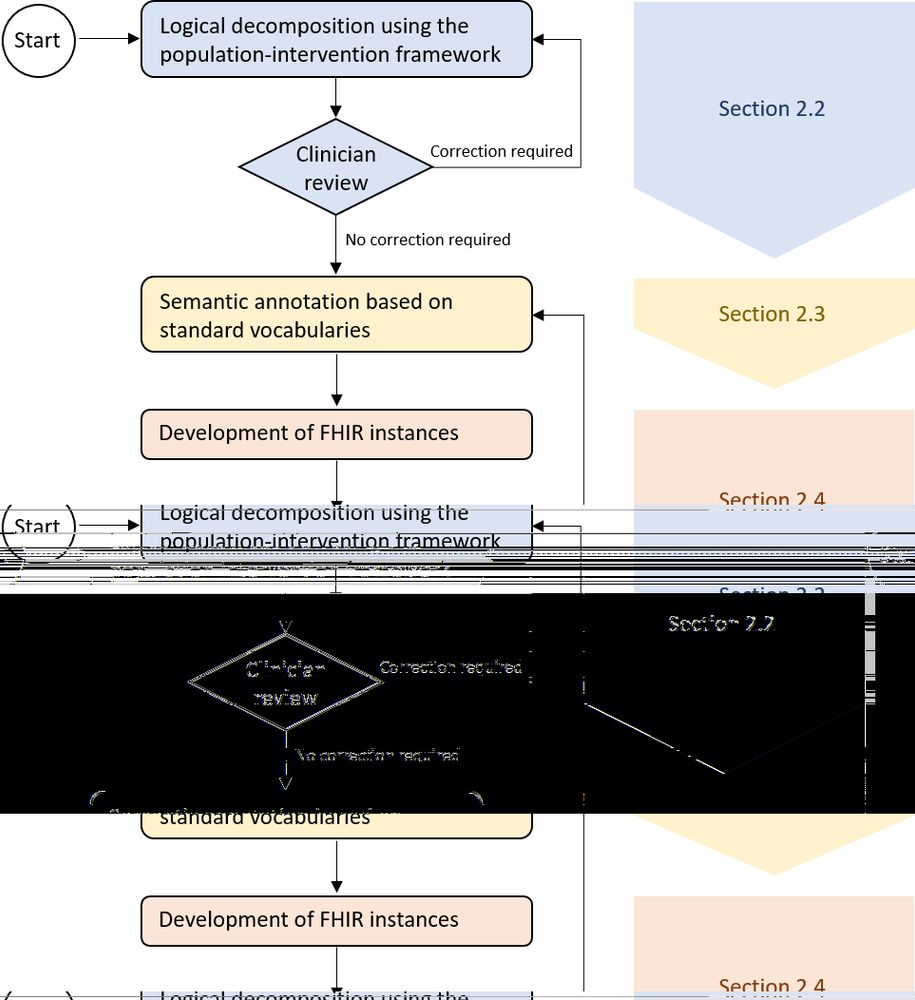
JMIR Publications
A leading open access publisher of digital health research and champion of open science. With a focus on author advocacy and research amplification, JMIR Publications partners with researchers to advance their careers and maximize the impact of their work.
- Reminder>> Exploring Young Adults' Attitudes Towards AI-Driven #mHealth Apps: A Qualitative #Study (preprint) #openscience #PeerReviewMe #PlanP
Exploring Young Adults' Attitudes Towards AI-Driven #mHealth Apps: A Qualitative #Study
Date Submitted: Apr 16, 2025. Open Peer Review Period: May 8, 2025 - Jul 3, 2025.dlvr.it - Reminder>> A Design Thinking Approach for Transnational Adaptation of Two Mobile #MentalHealth apps: Tutorial for #Researchers and practitioners (preprint) #openscience #PeerReviewMe #PlanP
A Design Thinking Approach for Transnational Adaptation of Two Mobile #MentalHealth apps: Tutorial for #Researchers and practitioners
Date Submitted: May 7, 2025. Open Peer Review Period: May 8, 2025 - Jul 3, 2025.dlvr.it - Reminder>> Developing computer-interpretable quality indicators for intensive care #Medicine (preprint) #openscience #PeerReviewMe #PlanP
Developing computer-interpretable quality indicators for intensive care #Medicine
Date Submitted: May 7, 2025. Open Peer Review Period: May 8, 2025 - Jul 3, 2025.dlvr.it - Oxford-led study counsels against health advice from AI chatbots - Cybernews (mentions @jmirpub)
Oxford-led study counsels against health advice from AI chatbots - Cybernews
... Journal of Medical Internet Research reminded. Your every question trains the model further – but is your data then secure? And if your physician ...dlvr.it - Metaverse in Healthcare Market Projected to Hit USD 175.46 - openPR.com (mentions @jmirpub)
Metaverse in Healthcare Market Projected to Hit USD 175.46 - openPR.com
For instance, a study issued in the Journal of Medical Internet Research detected that VR dependent training enhanced surgical performance by 230% as ...dlvr.it - Improving Healthcare Through Telehealth: A Win-Win Solution - iTWire (mentions @jmirpub)
Improving Healthcare Through Telehealth: A Win-Win Solution - iTWire
Similar findings were reached by a 2020 review published in the Journal of Medical Internet Research, which found that high-quality telehealth ...dlvr.it - New in JMIR: Podcasts in Mental, Physical, or Combined Health Interventions for Adults: Scoping Review
Podcasts in Mental, Physical, or Combined Health Interventions for Adults: Scoping Review
Background: The increasing prevalence of poor mental and physical health in adults is a global health concern. Given the scope of this problem, scalable and effective treatment interventions are needed. While podcasts (#Online #Digital audio files) are becoming more popular, the extent of podcast use in mental, physical, or combined health interventions has not been reviewed. Objective: This scoping review primarily aims to summarize the available evidence regarding the use of podcasts in health promotion interventions. A series of 5 #Research questions was designed to systematically review and accurately represent podcast use in current #Research interventions. Methods: We conducted a search of electronic databases (MEDLINE, PsycINFO, Embase, CINAHL, Scopus, and CENTRAL), gray literature articles, and relevant journals reported in the English language. Eligible studies targeted adults (aged ≥18 y), included a podcast in at least 1 intervention, and measured a mental or physical health outcome. Results: Overall, 51 articles (published studies: n=26, 51% and gray literature articles: n=25, 49%) were deemed eligible. In total, 58% (15/26) of the included peer-reviewed studies were published in the last 5 years, suggesting that the use of podcasts as an intervention approach is increasing. On average, 85.6% (n=2104) of the participants included in these #Research studies were women. In total, 31% (8/26) of the studies contained a female-only sample. In contrast, no #Research studies contained a male-only sample. Most peer-reviewed published studies (19/26, 73%) and gray literature sources (22/25, 88%) of the podcasts were used within multicomponent interventions, with most targeting physical health outcomes (peer-reviewed publications: 14/26, 54% and gray literature sources: 13/25, 52%). Results pertaining to podcast design, sources, theoretical principles, and thorough process evaluation indicators were heterogeneous. Conclusions: The versatility that podcasts can offer as a medium for reaching and engaging with participants and end users was evident in this scoping review. While #Research using podcasts is growing, many (18/26, 69%) studies included in this scoping review were conducted in the United States and sampled female participants, highlighting the need to diversify the field. As expected, there was a high level of variation across the included studies in relation to how podcasts were used and designed within interventions. To address this, a standardized approach would be valuable in guiding #Researchers and practitioners through both the development and reporting phases of future podcast #Research, including aspects such as theoretical framework, a description of podcast development (eg, co-design and end-user engagement), objective podcast use, and process evaluation data.dlvr.it - New in JMIR: #Telehealth Interventions in #Pharmacy Practice: Systematic Review of Reviews and Recommendations
#Telehealth Interventions in #Pharmacy Practice: Systematic Review of Reviews and Recommendations
Background: #Pharmaceutical care has expanded, with #Telehealth playing a key role, especially during the #COVID19 #coronavirus pandemic. Despite global growth, existing reviews focus on specific settings or conditions, highlighting the need for broader #Research on #PublicHealth topics and comparative studies to evaluate the effectiveness, preferences, and cost of #Telehealth interventions in #Pharmacy practice. Objective: The aim of this #Study was to unify existing literature on the impact of #Telehealth on future #Pharmacy practice and to analyze those already implemented in current #Pharmacy practice, with the objective of providing recommendations. Methods: The PRISMA (Preferred Reporting Items for Systematic Reviews and Meta-Analyses) framework was used to guide this review. In total, 4 databases were searched for relevant studies: PubMed, CINAHL, #Web of Science, and Cochrane Library. Title, abstract, and full-text screening was performed, and 18 reviews met the selection criteria. The search period was from August 1, 2012, to December 22, 2024. The quality of the reviews was assessed using a 5-point Likert scale and a GRADE-CERQual scale. Results: Based on the identified reviews, #Telehealth interventions were categorized into #Teleconsultation, #Telemonitoring, #Telecollaboration, and #Telesupport. #Teleconsultation was the most frequently used. #Telephones were most common in #Teleconsultations and #Telemonitoring, while mobile, #Web, or computer applications were most frequent in #Telesupport. A combination of methods was most used to facilitate #Telecollaboration, such as #Telephone, fax, electronic messaging, shared electronic records, and videoconferencing. The identified reviews were evaluated by health outcomes, #Hospital readmission rates, ##Patient safety, adherence, satisfaction, #Pharmacist shortage, and quality and access to care. The use of #Telehealth in #Pharmacy has generally seen an improvement in overall outcomes compared to traditional #Pharmacy practice. Our results show a strong push to integrate #Telehealth into future #Pharmacy practice, with the United States leading the way in adoption, demonstrating increased care access, quality, and ##Patient safety. In Singapore, #Telephone consultations have been commonly used in #Hospitals, though community settings lack widespread adoption. However, the growing #Digital literacy of older adults and innovations like chatbots and #Telemonitoring present opportunities to expand #Telehealth services. To align with this shift, #Pharmacy education should invest in enhancing formative training by incorporating #Telehealth training, ensuring future #Pharmacists are prepared for this evolving practice, applicable to regions with similar contexts. Conclusions: #Telehealth has shown promise in improving overall outcomes in #Pharmacy practice. While many countries have made strides, particularly in #Hospital settings, there remains an opportunity for greater adoption in community #HealthCare, driven by innovations like #Telemonitoring and #Digital literacy among older adults. The findings from this #Study can be used to inform future implementation of #Telehealth interventions in #Pharmacy in Singapore and other regions or cities with similar contexts.dlvr.it - New in JMIR: Comparing artificial intelligence (#AI)–Generated and Clinician-Created Personalized Self-Management Guidance for ##Patients With Knee Osteoarthritis: Blinded Observational #Study
Comparing artificial intelligence (#AI)–Generated and Clinician-Created Personalized Self-Management Guidance for ##Patients With Knee Osteoarthritis: Blinded Observational #Study
Background: Knee osteoarthritis is a prevalent, chronic musculoskeletal disorder that impairs mobility and quality of life. Personalized ##Patient education aims to improve self-management and adherence; yet, its delivery is often limited by time constraints, clinician workload, and the heterogeneity of ##Patient needs. Recent advances in large language models offer potential solutions. GPT-4 (OpenAI), distinguished by its long-context reasoning and adoption in clinical artificial intelligence (#AI) #Research, emerged as a leading candidate for personalized health communication. However, its application in generating condition-specific educational guidance remains underexplored, and concerns about misinformation, personalization limits, and ethical oversight remain. Objective: We evaluated GPT-4’s ability to generate individualized self-management guidance for ##Patients with knee osteoarthritis in comparison with clinician-created content. Methods: This 2-phase, double-blind, observational #Study used data from 50 ##Patients previously enrolled in a registered randomized trial. In phase 1, 2 orthopedic clinicians each generated personalized education materials for 25 ##Patient profiles using anonymized clinical data, including history, symptoms, and lifestyle. In phase 2, the same datasets were processed by GPT-4 using standardized prompts. All content was anonymized and evaluated by 2 independent, blinded clinical experts using validated scoring systems. Evaluation criteria included efficiency, readability (Flesch-Kincaid, Gunning Fog, Coleman-Liau, and Simple Measure of Gobbledygook), accuracy, personalization, and comprehensiveness and safety. Disagreements between reviewers were resolved through consensus or third-party adjudication. Results: GPT-4 outperformed clinicians in content generation speed (530.03 vs 37.29 words per min, Pdlvr.it - Topical Steroid Withdrawal: Misdiagnosis, Distrust, and Impacts on #MentalHealth (preprint) #openscience #PeerReviewMe #PlanP
Topical Steroid Withdrawal: Misdiagnosis, Distrust, and Impacts on #MentalHealth
Date Submitted: Apr 29, 2025. Open Peer Review Period: May 7, 2025 - Jul 2, 2025.dlvr.it

